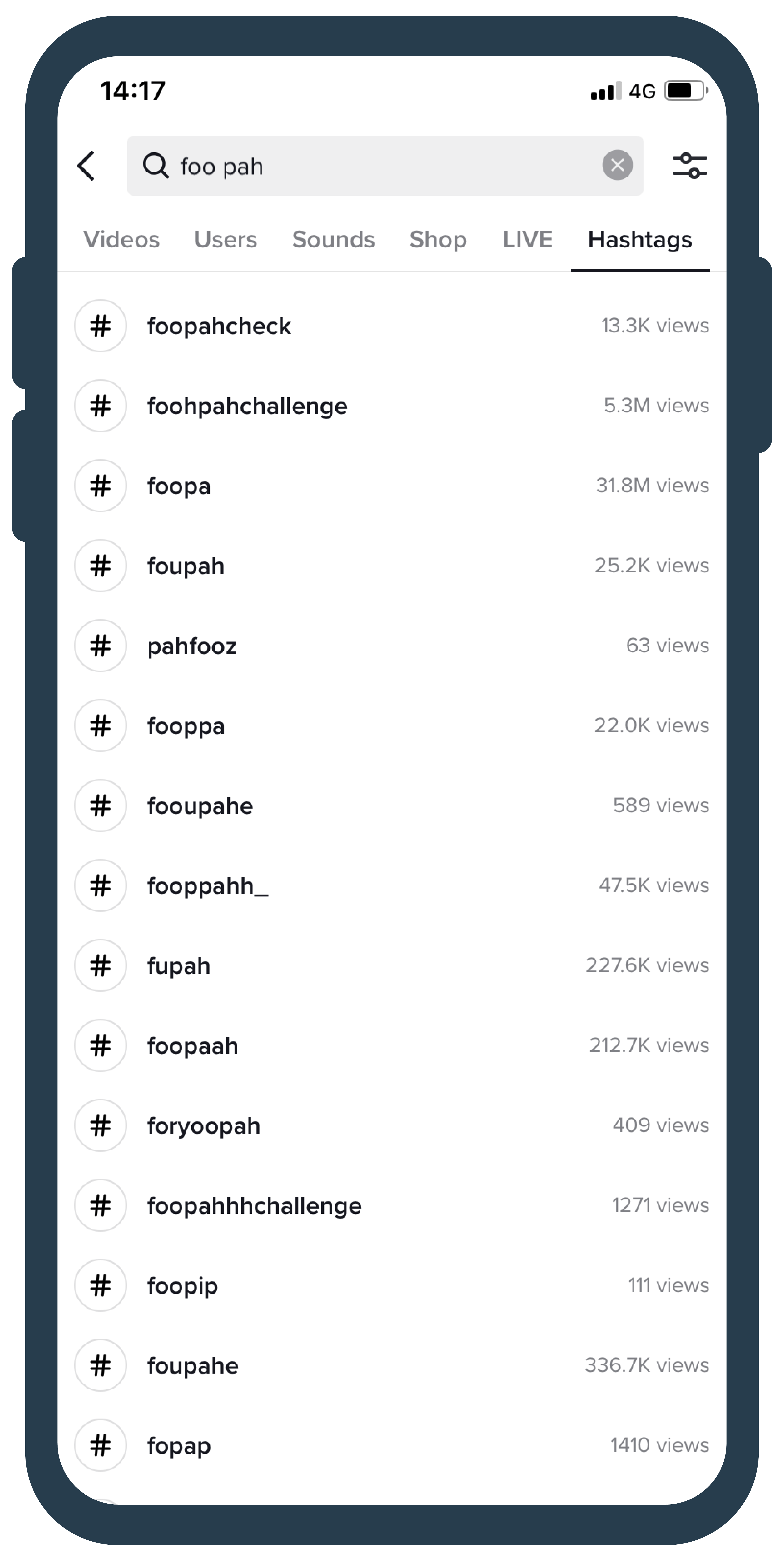Last Updated on 19th April 2024
Reading Time: 5.5 mins
24th February 2023
What is the issue?
Our safeguarding experts have been made aware of a viral challenge circulating on TikTok using variations of the hashtag ‘foopah’. A play on the phrase ‘faux pas’ (an embarrassing public act), the trend encourages users to upload ‘blink and you’ll miss it’ nudity. This aims to get around the platform’s detection and moderation by being hidden in plain sight. Using screens, mirrors, and other reflective surfaces are just some of the ways people have taken part in the challenge.
The content itself ranges from those who are sharing more obvious sexually explicit content to suggestive but subtle imagery of themselves. The trend also creates an allure for young people who are taking to various platforms to ‘react’ to the challenge or discuss it with others online.
The challenge originated from one TikTok user as a way of promoting her Only Fans account. Her initial video, which included the subtle flashing of her breasts, gathered 2 million views in 24 hours.
As with most inappropriate or banned hashtags, different variations in spelling tend to appear as the platform detects and removes it, prompting the creation of another. The #foopahh hashtag was viewed more than 7 million times, but has since been removed. It was quickly replaced by #foopa which has now over 30 millions views.

Why would children and young people engage with the challenge?
Wanting to ‘go viral’
A video with a ‘hidden’ sexual image could encourage viewers to watch the video repeatedly until they find it. In doing so, the creator of the video hopes to gain better engagement . This signals to TikTok’s algorithm that the content is popular, leading to more shares and followers for the creator with the potential to ‘go viral’. Despite the account of the original creator of the challenge being suspended by TikTok, the creator claims:
Source: Buzzfeed
Others may choose to engage with the challenge in a different way but with the same motive. By creating ‘reaction videos’, those searching for the hashtag may also come across these reaction videos and are likely to engage with them too.
Clickbait
The content produced by the challenge ranges from subtle to explicit. Those who choose to engage in a more subtle or less inappropriate way, trivialise the risk presented by sharing explicit content in a public space online. Some may choose to use the hashtag but not take part in the challenge within the video they share, to encourage viewers to study their video to find the ‘foopah’. In turn, they gain engagement and viewers without sharing an image of themselves.
Thrill-seeking behaviours
The nature of this challenge is that it entices users to find new and creative ways of continuing to get around the platform’s ability to detect and filter nudity. This can lead to a sense of achievement and validation for successfully avoiding the platform’s detection and moderation. This can fuel the desire to continue engaging in this type of behaviour.
Join our Online Safeguarding Hub Newsletter Network
Members of our network receive weekly updates on the trends, risks and threats to children and young people online.












